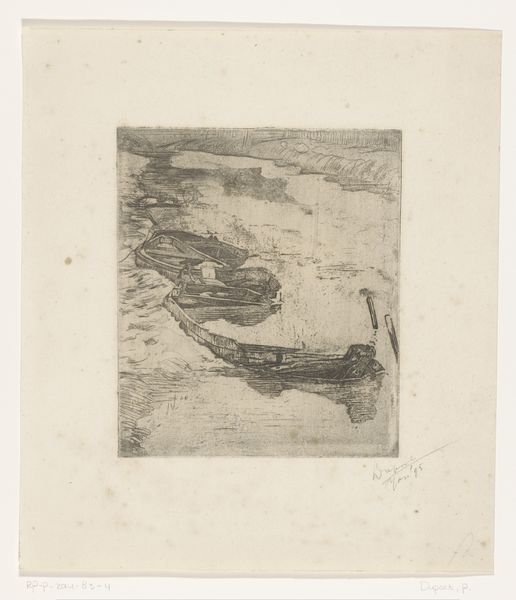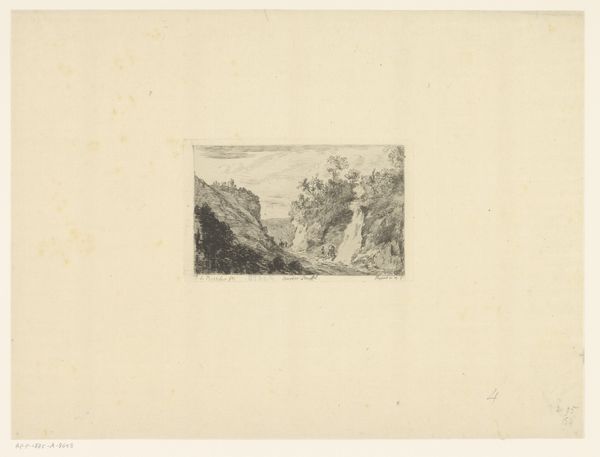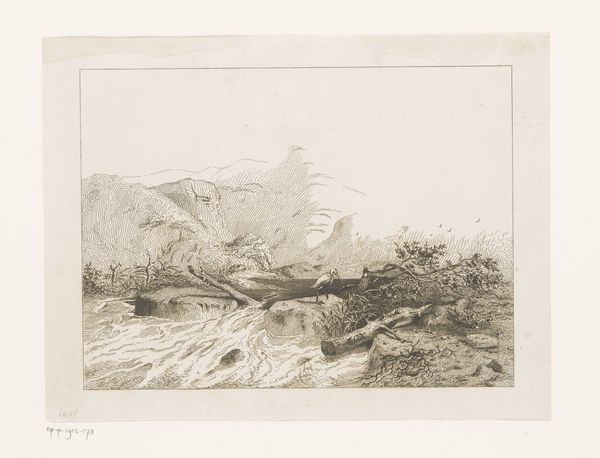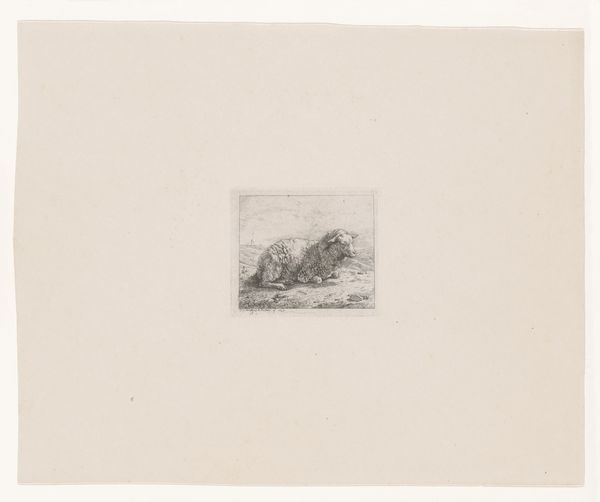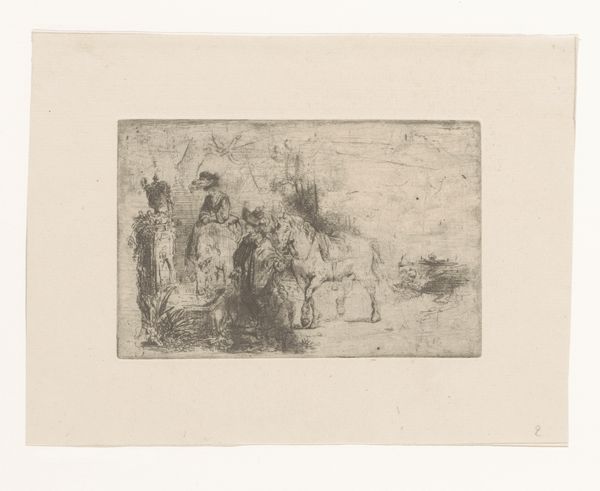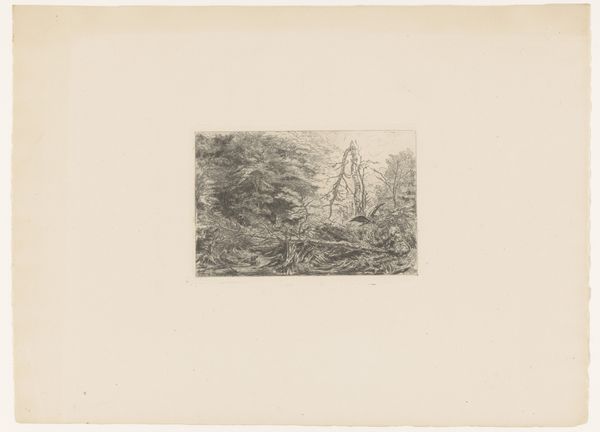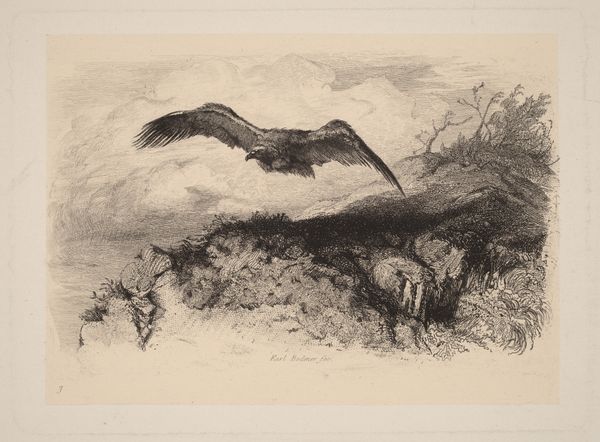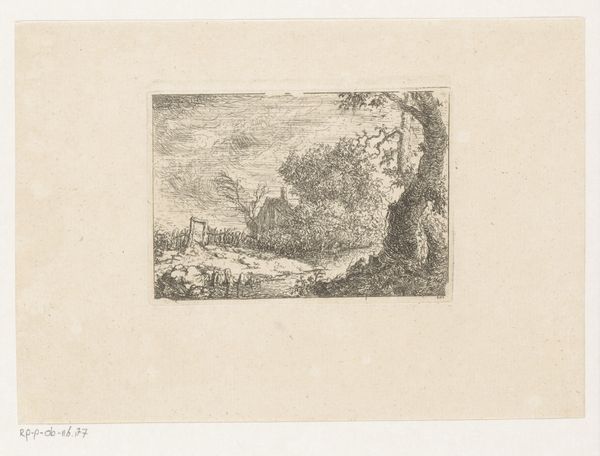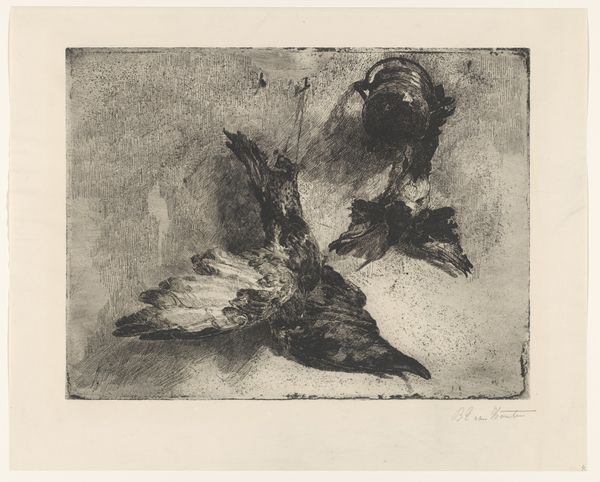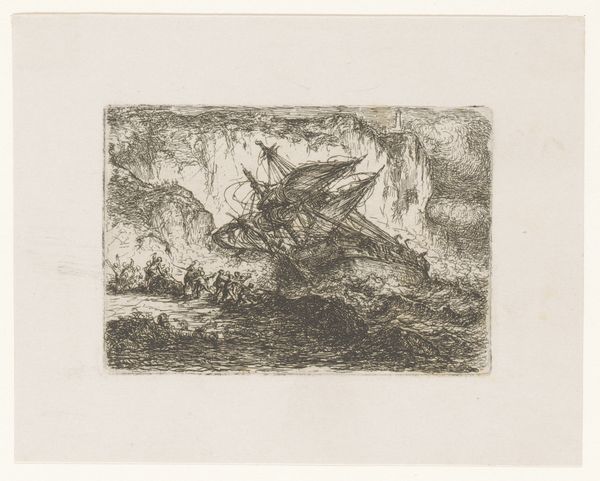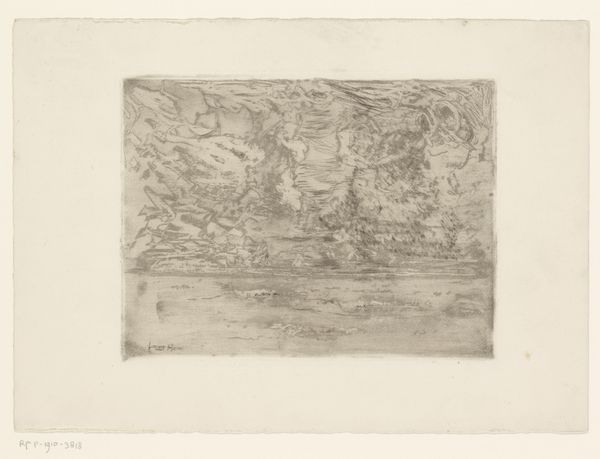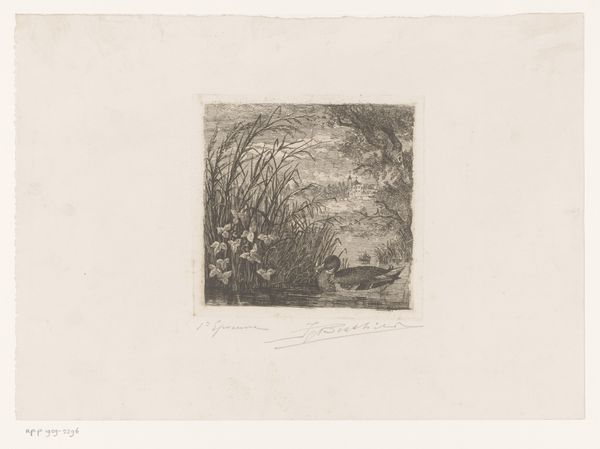
Dimensions: height 104 mm, width 211 mm
Copyright: Rijks Museum: Open Domain
Edgar Chahine made this etching of a valley near Monte Oliveto Maggiore, Italy. The print captures a tranquil scene, but its significance lies in understanding the role of landscape art within a broader cultural context. During the late 19th and early 20th centuries, artists like Chahine often turned to landscape as a means of expressing national identity and cultural values. Italy, with its rich history and picturesque scenery, became a popular destination for artists seeking inspiration. The valley, with its rolling hills and lush vegetation, represents an idealized vision of the Italian countryside. The etching medium itself is significant; it allowed for detailed and reproducible images that could be widely distributed, shaping perceptions of Italy. To truly understand the artwork, we can look to travel literature and historical accounts of the period, uncovering the complex interplay between art, tourism, and national identity. Ultimately, this print is a window into the social and cultural forces that shaped artistic production and reception.
Comments
No comments
Be the first to comment and join the conversation on the ultimate creative platform.
